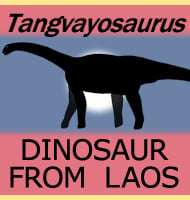Qiupanykus
In Depth Qiupanykus is a genus of alvarezasurid dinosaur that lived in Asia towards the end of the Cretaceous. Eggs of oviraptorid dinosaurs found near the holotype skeleton of Qiupanykus have led the describers of the genus that maybe Qiupanykus, and perhaps other alvarezsaurs, used the stout claws on their forelimbs to punch holes in … Read more
